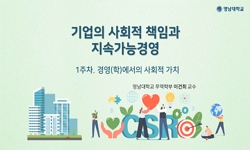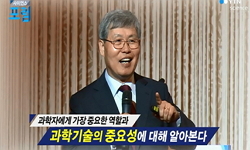This paper is to study the missionary reflection of social service mission in Korea church after the 1945 liberation of Korea. When reflecting social service of Korea churches according to the historical features, it could be divided as before and aft...
http://chineseinput.net/에서 pinyin(병음)방식으로 중국어를 변환할 수 있습니다.
변환된 중국어를 복사하여 사용하시면 됩니다.
- 中文 을 입력하시려면 zhongwen을 입력하시고 space를누르시면됩니다.
- 北京 을 입력하시려면 beijing을 입력하시고 space를 누르시면 됩니다.

해방 이후 한국교회 사회봉사선교의 역사적 성찰 = The Missionary Reflection of Social Service in Korea Church after the 1945 Liberation
한글로보기부가정보
다국어 초록 (Multilingual Abstract)
This paper is to study the missionary reflection of social service mission in Korea church after the 1945 liberation of Korea. When reflecting social service of Korea churches according to the historical features, it could be divided as before and after the 1945 liberation of Korea. The social service before the liberation could be summed up as ‘un-structural service period’ that had been conducted to Korean people in poverty, diseases and ignorance during the beginning of mission by the missionaries. The other could be summarized as ‘structural service period’ that is recognized the ideological conflict and the suffering from the division of Korea into north and south and the Korean war and ‘holistic service period’ that tried to avoid a crisis into social service mission as Korea churches in quantitative growth were experiencing stagnation. The mission before the l945 liberation was an education and a medical service as the approaching method in Korean society. But those services were one method for evangelism because they were based on conservatism theology of early missionaries. So, there was no missio-theological reflection for the extension of God’s Kingdom that Jesus Christ proclaimed in the world. Therefore early Korean churches are ‘un-structural service period’ that emphasizes only individual's spiritual salvation in the absence of society. During the Japanese colonial period social service of Korea church was ‘solidarity period’ that tried to find a clue of national problem solution from a rural community movement. Korean churches in the 1920s began to recognize social salvation and the world’s structural problems. The rural community movement also developed actively for about 10 years from the 1920s to the mid of 1930s, but it should be stopped due to the oppression in and out of church in the late 1930s. Even though there were many believers who died of dire persecution, many main religious associations in Korea found the way to live in sympathy with the visit of Japan’s shrine. After the 1945 liberation Koreans experienced both the joy of liberation from Japan and fratricidal war. In this period the duty of Korea churches was to save Clients in want and received financial support from the western churches because of economical poverty and impoverishment. And the April 19 pro-democracy movement in 1960 was happened due to the political corruption, but the democratization retreated because of the May 16 military coup in 1961. Industrialization and urbanization are promoted as focusing on the economic development, and UIM that helps the human rights abuses of workers origins. In this period Korean churches begin to open their eyes about the evil of social structure and illegality and corruption stemming from the huge gap forming between the rich and the poor, materialism and the negligence of humanity. So this is ‘structural service period,’ for Korean churches that are focusing on the individual’s spiritual salvation become to recognize the evil of social structure and injustice as mission work. Finally, since Korean churches after the 1970s are interested in the church’s growth and expansion, they are not into social service. The economic growth by the military regime caused trouble such as the gap between the rich and the poor, environmental disruption and materialism and formed urban slums. And also Korean churches that disregard these problems are contaminated by growth-oriented theology, but they surprisingly growed with the military regime. In this period the large scale gathering and revival are lively held, and churches closely cooperate in turning the concern about human rights and democratization into individual’s spirit salvation and blessing. As a result, Korean churches after the 1990s have been put aside in the society and stagnated constantly. Now Korean churches stand in between temptation of growth and responsibility of social service.
목차 (Table of Contents)
- Ⅰ. 해방 후: 구조적(structural) 봉사기
- Ⅱ. 1970년대 이후: 통전적(Holistic) 봉사기
- Ⅲ. 끝맺는 말
- Abstract
- 참고문헌
- Ⅰ. 해방 후: 구조적(structural) 봉사기
- Ⅱ. 1970년대 이후: 통전적(Holistic) 봉사기
- Ⅲ. 끝맺는 말
- Abstract
- 참고문헌
참고문헌 (Reference)
1 김은수, "현대선교의 흐름과 주제" 대한기독교서회 2013
2 김은수, "해방 이전 한국교회 사회봉사선교의 역사적 특징" 한국선교신학회 32 (32): 139-173, 2013
3 민경배, "한국기독교회사" 대한기독교출판사 1983
4 최무열, "한국교회와 사회복지" 나눔의집출판사 1999
5 노치준, "한국교회 사회봉사의 흐름과 방향" 서울신대 기독교사회복지연구소 (8) : 1999
6 민경배, "월드비전 한국50년 운동사 1950-2000" 홍익재 2001
7 김태균, "우리는 천국 간다" 쿰란출판사 2012
8 한국선교신학회, "선교신학: 선교와 디아코니아 제4집" 2002
9 대한예수교장로회 총회사회부, "민중과 함께 하는 교회" 대한예수교장로회 1983
10 연규홍, "기독교연합봉사회 50년사" 사회복지법인 기독교연합봉사회 1999
1 김은수, "현대선교의 흐름과 주제" 대한기독교서회 2013
2 김은수, "해방 이전 한국교회 사회봉사선교의 역사적 특징" 한국선교신학회 32 (32): 139-173, 2013
3 민경배, "한국기독교회사" 대한기독교출판사 1983
4 최무열, "한국교회와 사회복지" 나눔의집출판사 1999
5 노치준, "한국교회 사회봉사의 흐름과 방향" 서울신대 기독교사회복지연구소 (8) : 1999
6 민경배, "월드비전 한국50년 운동사 1950-2000" 홍익재 2001
7 김태균, "우리는 천국 간다" 쿰란출판사 2012
8 한국선교신학회, "선교신학: 선교와 디아코니아 제4집" 2002
9 대한예수교장로회 총회사회부, "민중과 함께 하는 교회" 대한예수교장로회 1983
10 연규홍, "기독교연합봉사회 50년사" 사회복지법인 기독교연합봉사회 1999
11 한국기독교연합회, "기독교연감 1957" 대한기독교서회 1957
12 김은수, "기독교사회복지" 형지사 2008
13 김한옥, "기독교 사회봉사의 역사와 신학" 실천신학연구소 2006
14 한국기독교사회문제연구원, "군부동재 종식과 선거투쟁" 민중사 1987
15 교회사회사업학회, "교회사회사업 편람" 인간과 복지 2004
16 김성철, "교회사회사업" 평화사회복지연구소 1999
17 Christian Institute for the Study of Justice and Development, "Presence of Christ Minjung: Introduction to the UIM in Korea"
18 Dietrich Werner, "Mission for the Life - Mission in Context, Ecumenical perspective of missiological Presence in the Discussion of WCC 1961-1991" 1991
19 Hans Jochen Margull, "Mission als Strukturprinzip, Ein Arbeitsbuch zur Frage missionarischer Gemeinden" 1968
20 Eun-Soo Kim, "Missio Dei und Kirche in Korea" Hamburg university 1995
21 Young-Bok Kim, "History and Theology of Christian Conference of Asia(CCA)" 86 : 1985
22 Bob Pierce, "Foreword, Going With God" World Vision Inc. 1954
23 J. E. Fisher, "Democracy and Mission Education in Korea" Teacher’s College Columbia University 1928
24 Chong-Hwa Park, "Das Ringen um die Einheit der Kirche in Korea" Tübingen University 1985
25 전국노숙자대책 종교시민단체협의회, "1999 동절기 노숙자 재활프로그램 사례집"
26 학술단체협의회, "1980년대 한국사회와 지배구조" 풀빛 1989
동일학술지(권/호) 다른 논문
-
- 한국기독교학회 선교신학회
- 김성익
- 2013
- KCI등재
-
- 한국기독교학회 선교신학회
- 김종성
- 2013
- KCI등재
-
- 한국기독교학회 선교신학회
- 송영석
- 2013
- KCI등재
-
- 한국기독교학회 선교신학회
- 안승오
- 2013
- KCI등재
분석정보
인용정보 인용지수 설명보기
학술지 이력
| 연월일 | 이력구분 | 이력상세 | 등재구분 |
|---|---|---|---|
| 2027 | 평가예정 | 재인증평가 신청대상 (재인증) | |
| 2021-01-01 | 평가 | 등재학술지 유지 (재인증) |  |
| 2018-01-01 | 평가 | 등재학술지 유지 (등재유지) |  |
| 2015-01-01 | 평가 | 등재학술지 유지 (등재유지) |  |
| 2011-01-01 | 평가 | 등재학술지 유지 (등재유지) |  |
| 2008-01-01 | 평가 | 등재학술지 선정 (등재후보2차) |  |
| 2007-01-01 | 평가 | 등재후보 1차 PASS (등재후보1차) |  |
| 2005-08-25 | 학회명변경 | 영문명 : The Korean Society For Mission Studies -> The Korean Society of Mission Studies |  |
| 2005-01-01 | 평가 | 등재후보학술지 선정 (신규평가) |  |
학술지 인용정보
| 기준연도 | WOS-KCI 통합IF(2년) | KCIF(2년) | KCIF(3년) |
|---|---|---|---|
| 2016 | 1.29 | 1.29 | 1.1 |
| KCIF(4년) | KCIF(5년) | 중심성지수(3년) | 즉시성지수 |
| 0.91 | 0.84 | 0.564 | 0.69 |




 스콜라
스콜라






